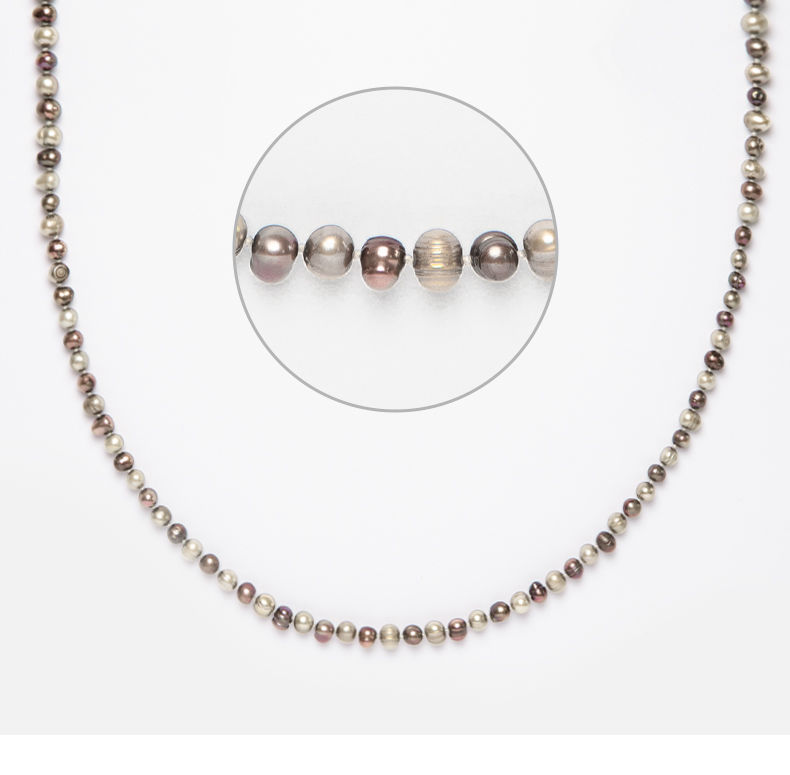
The classic pearl necklace is one of the most well-known and widespread pieces of jewellery. The round, mostly white pearls are arranged on a string so that a necklace is created without any gaps. However, there are also necklaces that are not made entirely of pearls, but of gold, silver or stainless steel, with individual pearls as pendants. The basis are often freshwater pearls made of pearl nacre, which are formed in molluscs as extraneous bodies. Under the microscope, the platelet-like growth of pearls can be seen, with the platelets held together by organic protein. In many cases, the freshwater pearls come from a mollusc called Hyriopsis cumingii, which is found in lakes and rivers in China. The size of the freshwater mussel is about 30 cm, so it is a very large mussel. They can reach an age of up to 30 years, which is already very old for a mussel. Before the cultivation of such pearls became established, they were found in rivers and lakes. These pearls were very delicate and had a very irregular shape. Nowadays, large baroque to round pearls are also cultivated. The freshwater pearl is a seedless pearl and therefore a full pearl. They are available in white, cream, pink and lilac. The sizes of freshwater pearls range from 2-10 mm, very rarely pearls up to 15 mm are found. All cultured pearls are organic in origin, i.e. they are grown in oysters or mussels. For jewellery production, it is important which pearls are used for the respective piece of jewellery, because only those pearls that have grown without the intervention of humans may also call themselves genuine pearls. Criteria by which the quality and value of pearls and thus also of pearl jewellery are measured are shape, size, lustre, surface quality and colour. Luster refers to the special shine created by the refraction of light on the surface of a pearl. The lustre should not be dull and the surface quality should be smooth and silky, not uneven. The type of pearl is also decisive for its value; natural pearls are considerably more valuable than cultured ones. A strongly developed mother-of-pearl layer and a clean hole through the pearl complete the requirements for high-quality pearl necklaces. The pearl necklace as such can already be found as an ornamental work in antiquity. In the Louvre there is pearl jewellery that is older than 2400 years. The three-row necklace was found during excavations in a sarcophagus in the palace of the Persian kings of Susa. In the Museum of Art in New York, you can see a Greek necklace made of pearls and gold that was probably made in 300 BC. The powerful and wealthy Romans were unsurpassed in the lavish display of pearls and pearl jewellery. The wife of the Roman Emperor Caligula also used small festivities to drape herself with millions worth of pearls. This is no longer surprising when people hear that Caligula himself had his boots studded with pearls and adorned his favourite horse with a pearl necklace. In the Middle Ages, pearls were mostly used in sacred goldsmithing. In the 15th and especially in the 16th century, pearls and pearl jewellery experienced a new peak of appreciation. Of all the queens, Elizabeth I (1533 - 1603) was probably the most passionate admirer of pearls. Paintings usually show her wearing several strings of pearls of different lengths. Some of them reached down to her knees.